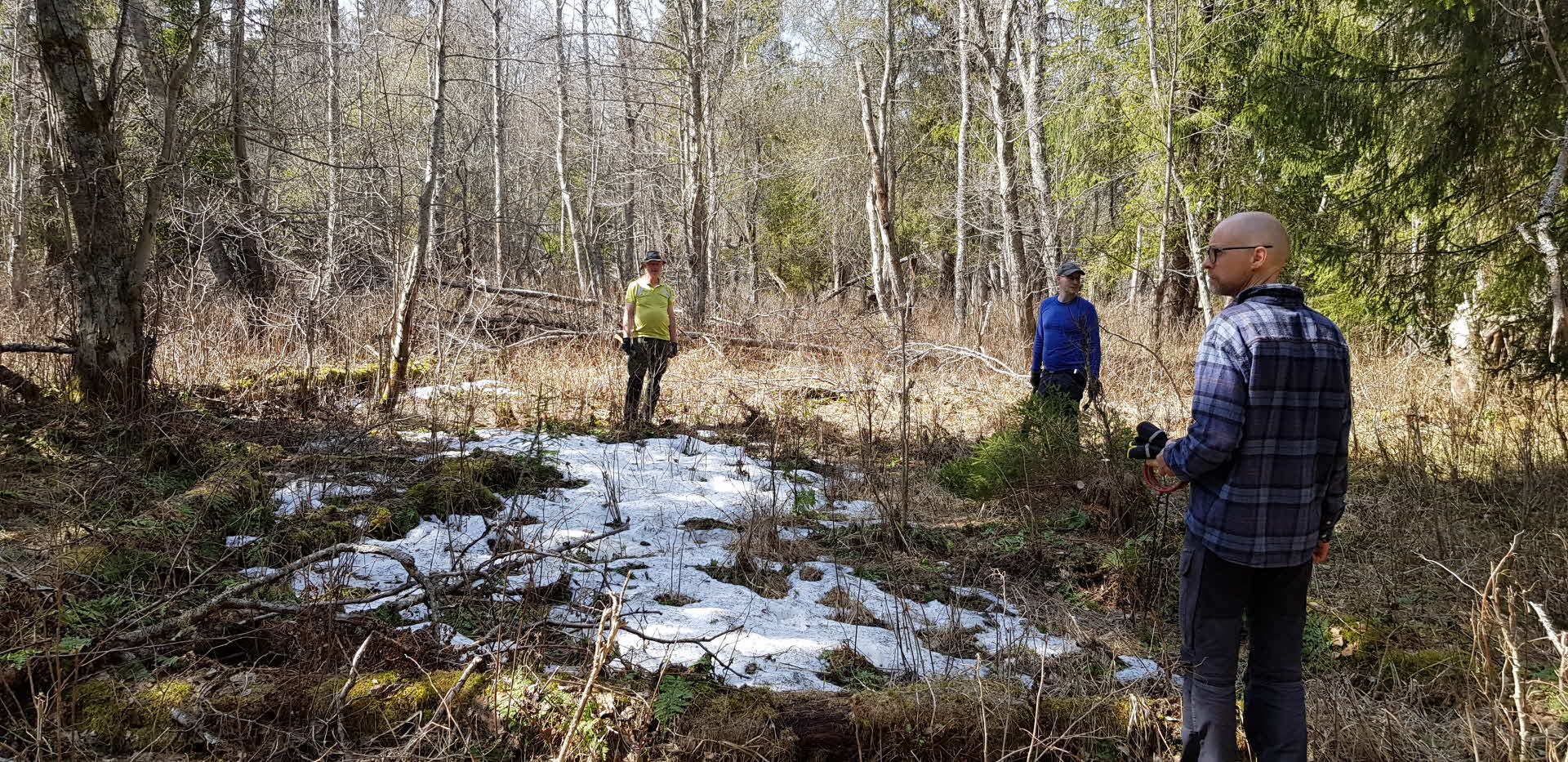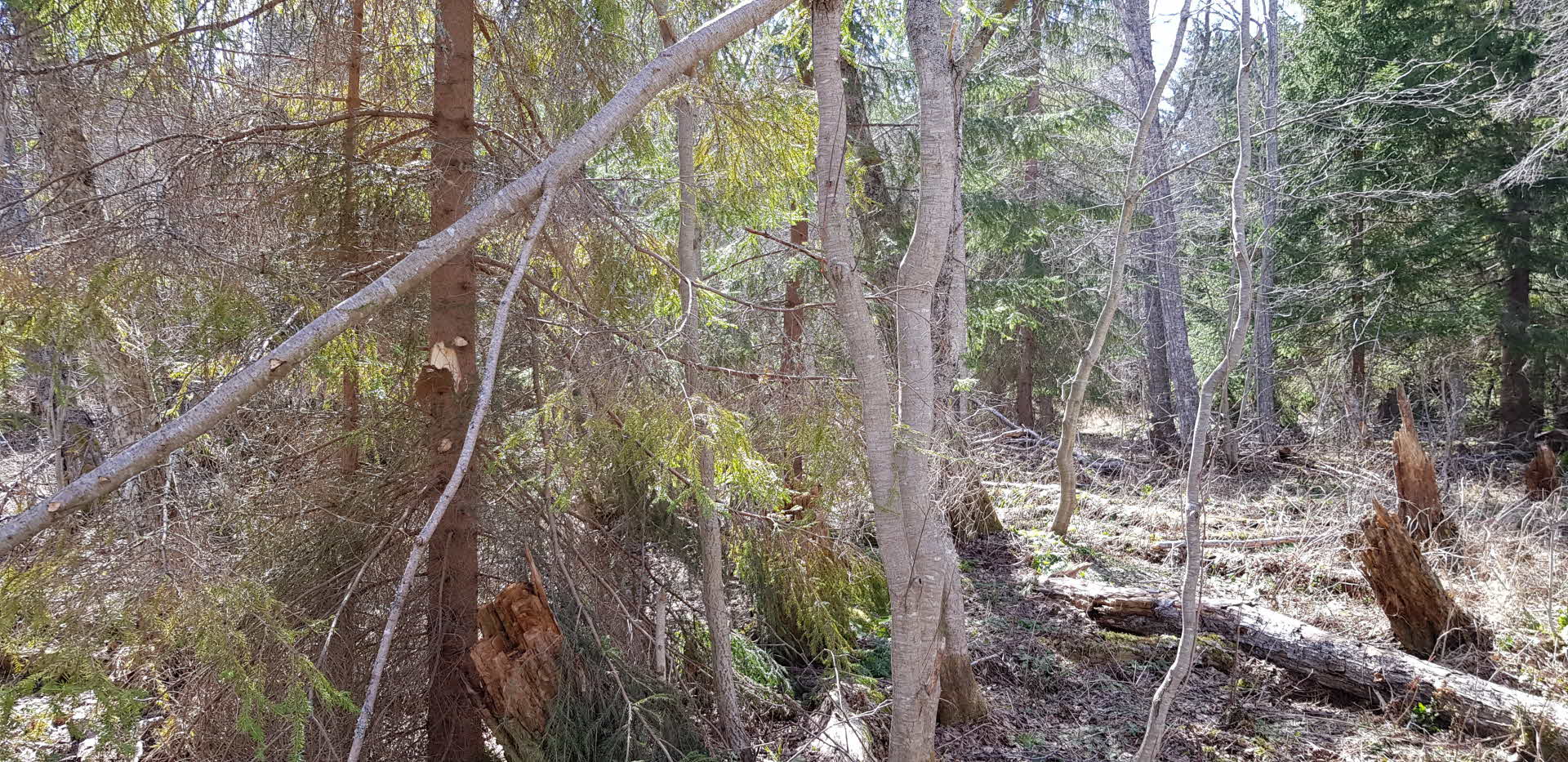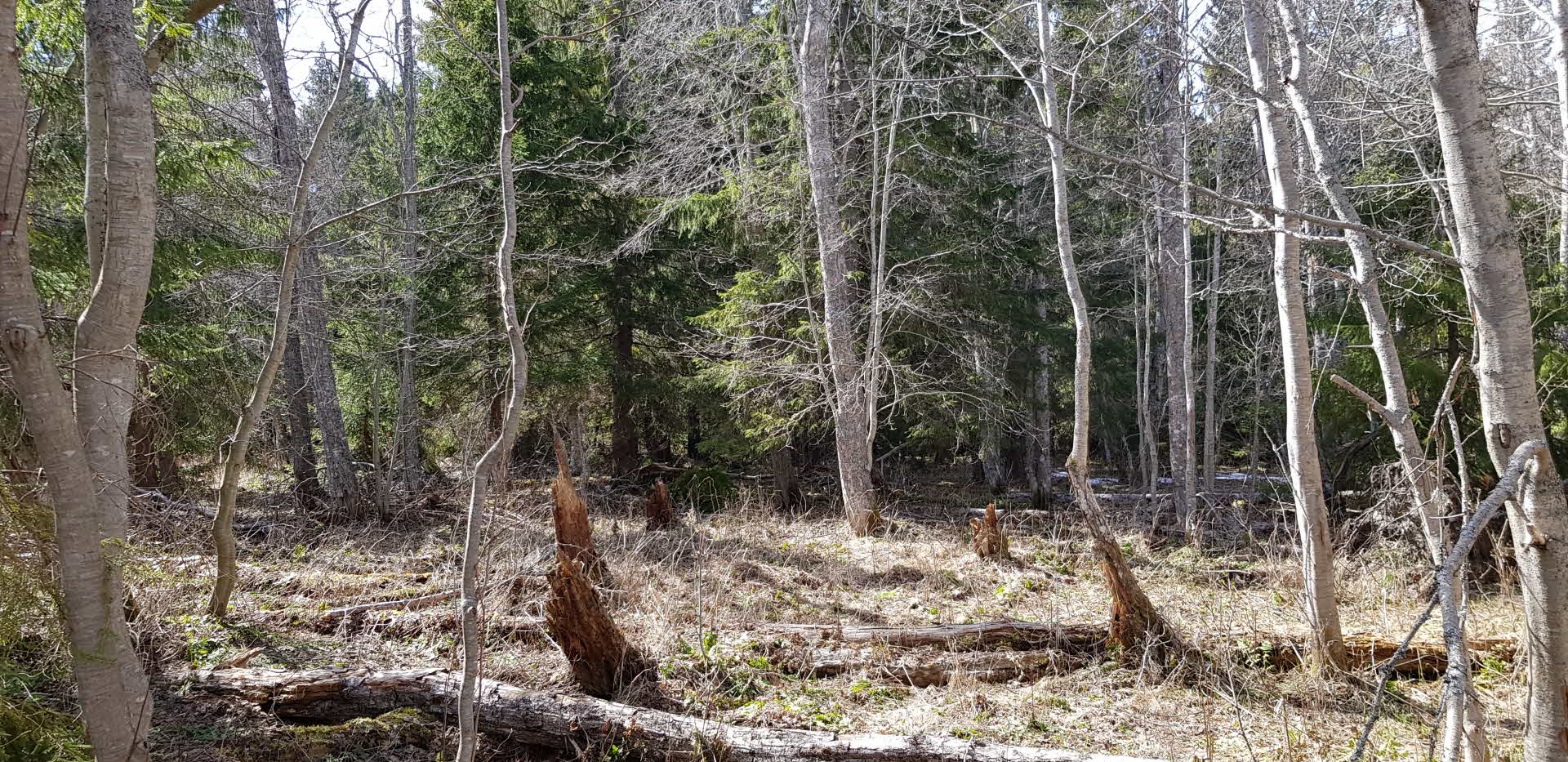
SCA protects conservation values in Lögdö ironworks
- News
- Forest
During the spring, SCA began introducing conservation measures at Lögdö bruk, an old ironworks site in Timrå Municipality. The aim is to promote deciduous forest – gray alder in particular – and to preserve a protected species of grass known as drooping woodreed.
Lögdö bruk is a former ironworks that was founded in 1685 and is now a popular recreation area. The Ljustorpsån and Aspån rivers run through the area, as well as the Masugnsbäcken creek. The site has been designated a cultural reserve by Timrå Municipality, but SCA owns land on some parts of the reserve as well as nearby.
Many different values
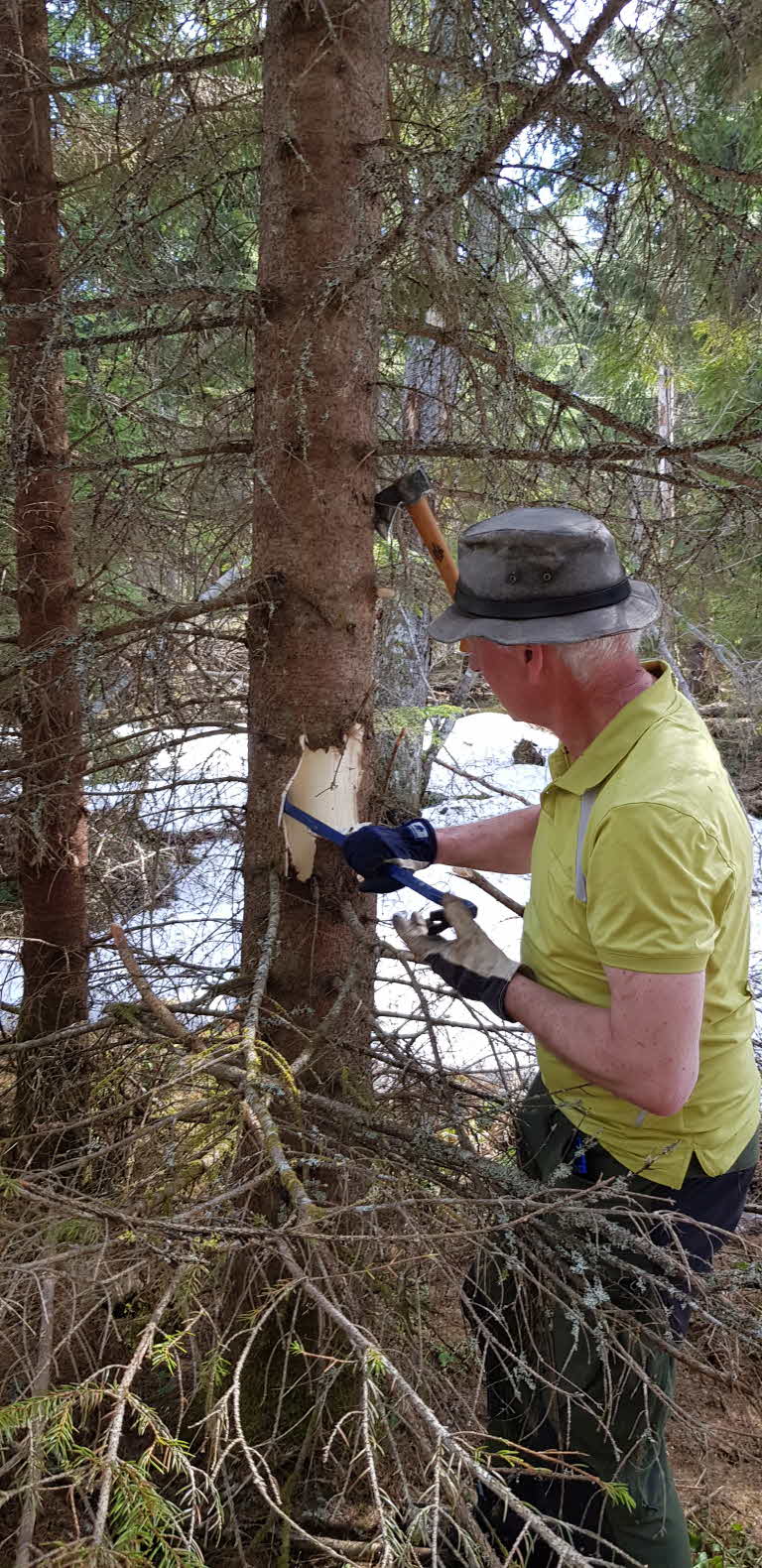
“There are many different values on the site, including deciduous-dominant landupheaval forests with many old and dead deciduous trees, and an abundance of drooping woodreed, which is a protected species. To preserve these occasionally flooded natural environments and the drooping woodreed, the area was designated a Natura 2000 site under the name of Masugnsgrundet. The area is not a protected nature reserve however, because it is still owned by SCA,” says Emelie Westin, nature conservation expert at SCA Skog.
Due to a request from both the white-backed woodpecker group in BirdLife Medelpad and the Lögdö Bruk association, SCA has drawn up a management plan for the Lögdö forests.
“We’ve made several field visits with various stakeholders and engaged with the local community and relevant interest groups in a consultation. We have also made a drooping woodreed inventory for some of the area and consulted with the Swedish Forest Agency regarding the management of drooping woodreed and the key habitats that exist here. Mattias Edman from the white-backed woodpecker group also gave me a lot of help with inventories,”says Emelie.
Several measures
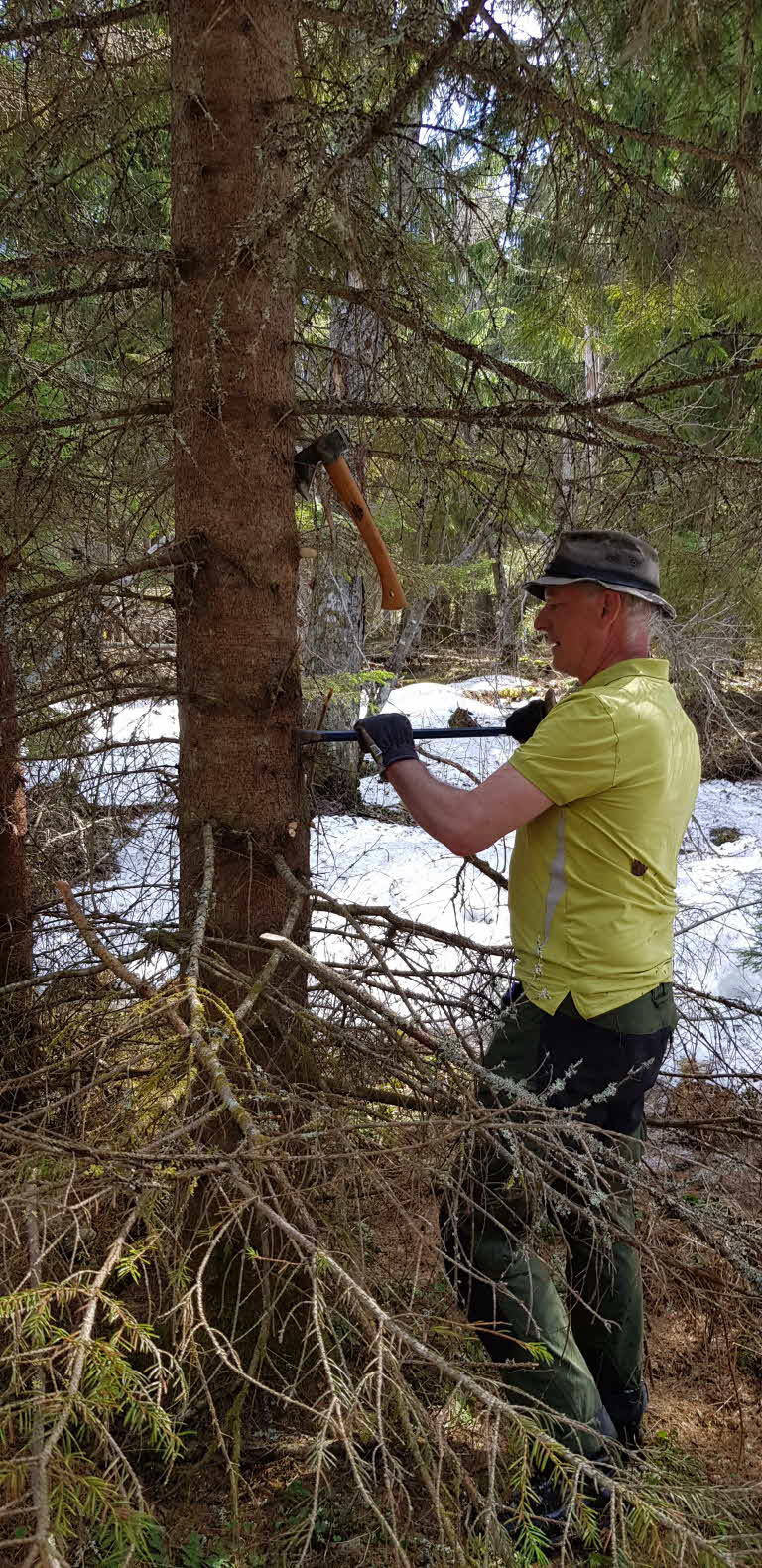
SCA is now implementing conservation measures and other adaptations in the site.
“Deciduous trees do not grow well in dense and shaded conditions, which is what happens when spruce start to grow and take over. According to experts and past experience, drooping woodreed does not thrive in spruce-dominant areas either, but it seems to have coped quite well with the dense spruce forest on this site. The most important thing is that the drooping woodreed is not released in a bare area, because it cannot compete with the vegetation that grows in a clearing,” says Emelie.
“We therefore need to ensure that the proportion of spruce is significantly reduced so that spruce doesn’t take over and displace the other species, while we act wisely and introduce measures that don’t hinder the growth of drooping woodreed. Our plan is to regenerate the areas where we remove a lot of trees with deciduous trees.”
Potential for white-backed woodpecker
Emelie has also visited the site with representatives from the white-backed woodpecker group in BirdLife Medelpad to see what can be done for birdlife.
“According to BirdLife Medelpad, Masugnsgrundet and Lögdö bruk are part of the area in Medelpad with the highest potential to restore habitats for the extremely rare white-backed woodpecker. This is a woodpecker with very specific habitat requirements. They are dependent on large areas of deciduous forest rich in dead trees where they can search for food,” says Emelie.
Together with the white-backed woodpecker group, SCA will ring bark some of the spruce trees so they will eventually die, and then remove some of the other spruce.
“We’ll start with the already open and deciduous-dominant areas, and ring-bark the weaker spruce. Thicker spruce will be felled with a chainsaw and debarked to prevent spruce bark beetle attacks, but not until the nesting period is over,” says Emelie.
Slow down the growth of spruce
Ring-barking and felling the spruce growing in areas dominated by deciduous trees is helping to slow down the ongoing spruce overgrowth, which has completely displaced the gray alder forest in other parts of Masugnsgrundet.
“We hope that our measures will help the younger deciduous trees to become established and grow. In the areas that are totally dominated by spruce, we will also consider what we can do to increase the deciduous forest cover, while also promoting the drooping woodreed and dead gray alder trees. It remains to be seen whether we can use machines or not.”
These measures will not be carried out on the Natura 2000 site because that would require special permission.
“It may be possible to implement measures on that site as well if we receive permission,” says Emelie.
“It will be exciting to follow the development of the area and see what our measures lead to. It would be fantastic if the white-backed woodpecker eventually returned. That’s aiming high, but who knows? Anyway, our measures will promote species that are dependent on deciduous forests, but not a huge area, such as the lesser spotted woodpecker. And that feels great!”
Photo: Emelie Westin
